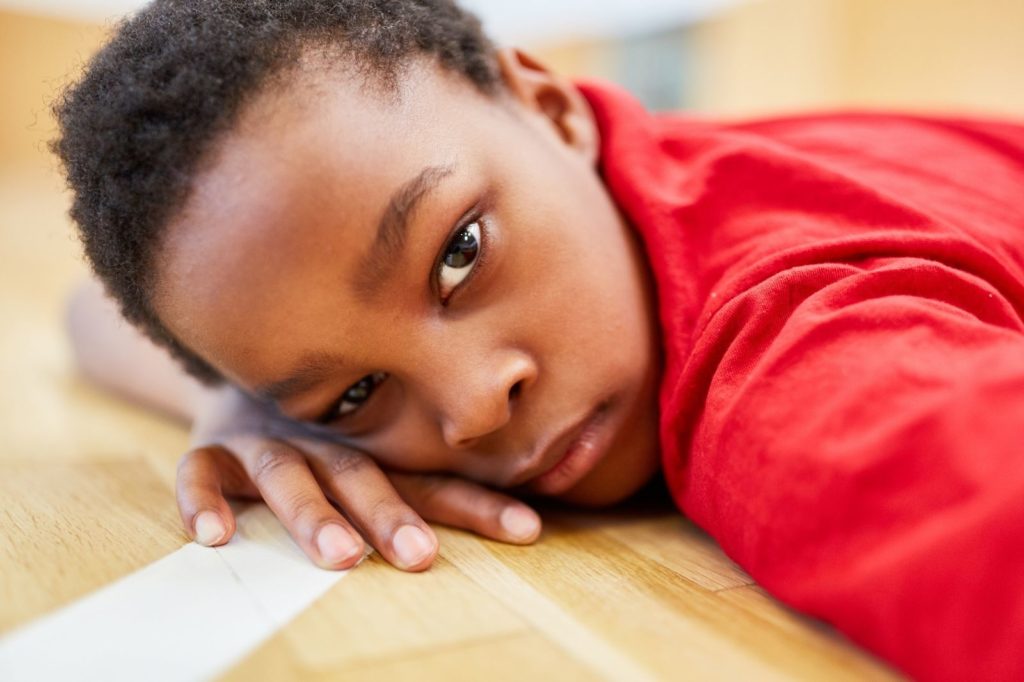Despite the common belief that children “don’t see color,” research shows even infants notice race. The truth is, kids will pick up information about race wherever they can. The picture below was created by The Children’s Community School, and shows a bit of what we know about the development of racial awareness in kids. If you have trouble seeing the picture, click the link for a downloadable, larger image.

Helping kids understand race is important in part because racism can create trauma reactions for people of color. It can become increasingly overwhelming to comprehend and to individually manage what is going on in our communities. We must ask ourselves about the stress of racial trauma and its effects on our ability to manage our emotions and daily functioning. Traumatic events, including experiencing or witnessing racism, can impact our ability to cope, can lead to depression or anxiety and can affect our relationships. These effects can last over a lifetime resembling PTSD, and can affect large groups.
So what do conversations about race and racism look like for families? Here are our tips to get the conversation going:
1. Do some learning of your own.
You are your kids’ role model! Begin by identifying your own cultural background. One way to do this is to reflect on your family’s story four generations ago and discuss this with your children. Where were your ancestors located? What was the racial climate?
Learning more about the history of racism can also help, and books and media can be a great way to do this (see some suggestions below). The more you become confident with the topic of race, the more confident you will feel discussing race with your children.
2. Start by asking what they have heard (online, in class, etc.).
Kids pick up information from many places (school, friends, etc.). Discussing the information your child already knows creates a collaborative conversation and helps you know their level of understanding.
3. It’s ok to say you don’t know.
Don’t feel like you need to have all the answers! It is okay to model uncertainty. Be open and honest with your child, and share your own experiences and thoughts appropriately. Don’t hide from the tough questions, and stick with the facts.
4. Acknowledge feelings of anger or being scared.
Many times we want to jump to information and answers before validating our kids’ feelings. Demonstrate empathy for feelings of fright, anger, or anxiety first.
Some empathetic statements may include: “It’s ok to feel this way” or “Things are scary and not everyone is always nice.” Refrain from the use of “I “ statements.
5. Expose your children to other cultures and ethnicities.
Doing so can open your children’s eyes to the diversity of perspectives in the world and provide opportunity for discussion. For instance, watch documentaries, visit historical sites, see new places and people, or read.
6. For Black and Brown families, share books that promote self-worth and dignity.
A number of resources exist that affirm Black and Brown dignity. Providing your children with these resources can help build self-worth when the news is hard or scary.
7. Be engaged and advocate.
Advocate in a way that works for your family (volunteer, peacefully protest, vote for change, share experiences).
Ignoring the questions and concerns can contribute to the problem. Conversations about race can be hard, uncomfortable, and cause anxiety, but educate yourself and reach out for knowledge (NAACP.org, ColorOfChange.org, LiveFreeUSA.org). Remember, you won’t be perfect in this discussion and that is okay! What matters is that you openly and humbly learn and discuss together–because often our beliefs and attitudes begin at home.
Here are some book suggestions to help you on this journey:
Books for Children:
- Antiracist Baby by Ibram X. Kendi
- All Are Welcome by Alexandra Penfold & Suzanne Kaufman
- Mixed: A Colorful Story by Arree Chung
- The Colors of Us by Karen Katz
- We’re Different, We’re the Same (Sesame Street)
- Hair Love by Matthew A. Cherry
- Let’s Talk About Race by Julius Lester
- The Day You Begin by Jacqueline Woodson
- I Am Enough by Grace Byers
- Something Happened in Our Town: A Child’s Story About Racial Injustice by Marianne Celano, PhD, Marietta Collins, PhD, and Ann Hazzard, PhD
Books for Teens:
- Just Mercy (Adapted for Young Adults) by Bryan Stevenson
- The Hate U Give by Angie Thomas
- Dear Martin by Nic Stone
- Mexican Whiteboy by Matt de la Pena
- American-Born Chinese Gene Luen Yang
- All American Boys: A Novel by Jason Reynolds and Brendan Kiely
- Stamped: Racism, Antiracism, and You (Remixed) by Jason Reynolds & Ibram X. Kendi
Books for Adults:
- Just Mercy: A Story of Justice and Redemption by Bryan Stevenson
- So You Want to Talk About Race by Ijeoma Oluo
- How to be Antiracist by Ibram X. Kendi
- Why Are All the Black Kids Sitting Together at the Cafeteria?: And Other Conversations About Race by Beverly Daniel Tatum
- Stamped from the Beginning: The Definitive History of Racist Ideas in America by Ibram X. Kendi










